The Tarot
 The tarot is a deck of cards that is often used as a means of divination of past events, present or future, of what would constitute a form of cartomancy.
The tarot is a deck of cards that is often used as a means of divination of past events, present or future, of what would constitute a form of cartomancy.Its origins date back at least to the fourteenth century, having no foundation to take their roots further back in history. The technique of divination, which only began in the late eighteenth and early nineteenth centuries, is based on the selection of playing cards specifically dedicated to this art that is done by an expert tarot reader, which then interprets the meaning of the cards regarding the future of the consultant. Tarot Cards
The tarot card deck is made up of 78 cards that are divided into the major Arcana and minor. Arcana in Latin is arcanum, which means mystery or secret.
Major Arcana cards, 22 in total, they are:
1. The magician
2. The High Priestess
3. The Empress
4. The Emperor
5. The High Priest
6. The Lovers 7. The Chariot
8. Justice
9. The Hermit
10. The Wheel of Fortune
11. Strength
12. The Hanged Man 13. Death
14. Temperance
15. The Devil
16. The Tower
17. The Star
18. The Moon
19. The Sun
20. Judgement
21. The World
22. The Fool
The Minor Arcana are 56 cards divided equally into four suits: swords, cups, clubs and coins, as in the Spanish deck, but with a slight variation: numbered cards from Ace (1) to ten, plus the members of the court: Jack, Queen, King and Knight. Etteilla makes a discovery about the number 78 which is the theosophical sum of the first twelve numbers. (1+2+3+4+5+6+7+8+9+10+11+12).
Origins of the Tarot
The first references to the Tarot appear in the fifteenth century in Italy. The deck is the oldest Tarot of Filippo Maria Visconti (1412-1447); it is now in the Yale University Library, United States of America.
Giordano Berti an Italian historian assumes that the Duke of Milan was the inventor of the Tarot. In fact, some pictures of Filippo Maria Visconti''s Tarot are equal to those of another deck designed by the Duke in 1415: The Game of the Heroes XVI.
In studies by occultists in the eighteenth and nineteenth centuries, as Antoine Court de Gebelin, Eliphas Levi and Dr. Gerard (Papus) seek to demonstrate the connection between the tarot and Kabbalah, as well as Egyptian symbolism.
According to the researchers of today,Daniel Rhodes and Encarna Sanchez, argue that the origin of the Tarot should be sought between the medieval cathars and also the Occitan culture whose philosophy fits perfectly with the basic idea of the game of the Tarot.
Thus, the presence of a High Priestess, the importance of female characters and references to Christianity different than Roman orthodoxy would have people think that the original use of the Tarot was as a transfer of philosophical knowledge, but with the passage of time would become used as a divination system. But the High Priestess was actually a symbol of the Christian faith, as demonstrated by many works of art from the Middle Ages.
Other authors claim that the Gypsies, in their wanderings around the European countries, promoted the Tarot as a divination system. There are, in fact, some that argue that the Tarot survived the Inquisition because the Gypsies were not priority targets of inquisitorial jurisdiction, for which they, their skills and their esoteric practices and personal belongings escaped from persecution and from being burned in fires and also have survived to this day. But it is true that Gypsies arrived in Europe when the Tarot was already known. On the other hand the game of Tarot has been played in Italy since the fifteenth century, and in the following century it was spread to many regions of Europe: first France, then Switzerland, Belgium, Germany and Austria. Tarot divination appears for sure in Italy and France in the eighteenth century.
Divinatory use of the tarot cards.
In the late eighteenth and early nineteenth century tarot cards were associated with mysticism and magic. The tradition began in 1781, when Antoine Court de Gebelin, a Swiss clergyman and Freemason, published Le Monde Primitif, a speculative study of ancient religious symbolism and its remnants in the modern world. De Gebelin argued that the symbolism of the Tarot de Marseille represented the mysteries of Isis and Thoth. Gebelin later claimed that the name "tarot" came from the Egyptian words "tar" which means "real" and "ro", which means "way" and that the Tarot therefore represented a royal road to wisdom.
Gebelin argued these and similar views in a dogmatic way, he had no evidence to support his arguments. In addition, Gebelin wrote before Champollion had deciphered Egyptian hieroglyphics. Modern Egyptologists found nothing in the Egyptian language that would support the Gebelin fanciful etymologies, but these findings came too late. When he set the authentic Egyptian texts, it was already firmly established, the identification of tarot cards with the "Book of Thoth" Egyptian occult practice.
Although tarot cards were used for fortune-telling in Bologna, Italy in the eighteenth century, they were originally published as a method of divination by Jean-Baptiste Alliette, also called "Etteilla", a French occultist who reversed the letters of his name and worked as a diviner shortly before the French Revolution. Etteilla designed the first esoteric Tarot deck, adding astrological attributions and "Egyptians" motives to several cards, altering many of the Marseilles designs, and adding divinatory meanings in the text of the cards. Etteilla decks, although now eclipsed by the Smith and Waite illustrated deck and the Thoth deck of Aleister Crowley, is still available.
Later, Mademoiselle Marie-Anne Le Normand popularized divination and prophecy during the reign of Napoleon I. This was due in part to the influence it had on Joséphine de Beauharnais, Napoleon''s first wife. However, this one did not usually use the tarot.
The interest in the tarot used for divination by other occultists came during the height of the Hermeticism, the 1840''s, in which (among others) Victor Hugo was involved. The idea of the cards as a mystical key was further developed by Eliphas Levi and passed to the English-speaking world by the Hermetic Order of the Golden Dawn. Levi, and not Etteilla, is considered by some the true founder of most contemporary schools of Tarot; his "Dogme et Ritual de la Haute Magie" of 1854 introduced an interpretation of the cards that he related to the Kabbalah. While Levi accepted Court de Gébelin claims about an Egyptian origin of the symbols of the cards, rejected Etteilla''s innovative and altered deck and arranged a deck in its place, a system which was related to the Tarot, especially Marseille Tarot with the Kabbalah and with the four elements of alchemy. On the other hand, some Etteilla divinatory meanings are still used by some tarot readers.

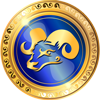


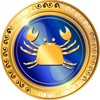
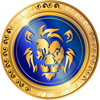

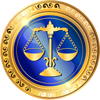


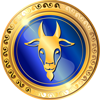


Send us your comments / suggestions